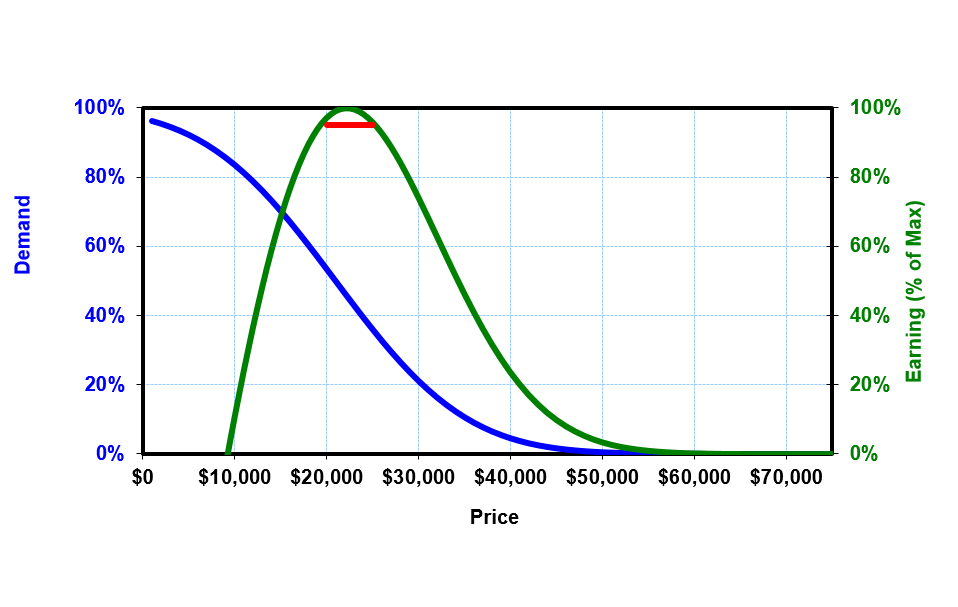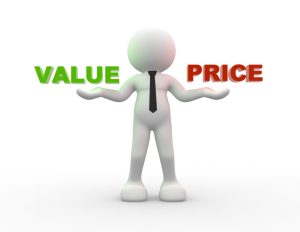Are you leaving price on the table?
Are your customers price buyers?
Will your customers choose value over price ?
Data suggests that businesses underprice products or services by 3% to 5%. Our research has found that 23% to 35% of buyers buy based on price. If everyone bought on price, then they would choose a discount first. Yet 70% of buyers who buy based on value always choose two to three value offerings over a discount.
To get a higher price (one of the four Ps of marketing), you need to understand the value you deliver and determine what you need to be valued more. A skillful query of your market and your customers will reveal what your customers value and what they are willing to pay. If you ask them the right way, then you will get the answers that lead to higher price. In other words, higher price is about delivering greater value.
Create value
Communicate value
Deliver value
Capture value
Seeking the Best Price
Price is the one component of the marketing mix that has a direct and straight path to the bottom line, so price optimization is key. Proven analytics operationalize pricing by
- Identifying the optimum price range for your products today
- Managing a pricing policy for the long-term health of your business

The expected goal of pricing policy is to maximize long-term earnings. While this is a simple statement, it is a difficult challenge complicated by uncertainties, competitors, multiple products of yours in the market, and customer segments. The core issue, however, is always the customer demand—how your products or services measure up against a set of competing alternatives at various prices. The calculation of customer demand should be the critical driver for any pragmatic approach to setting price. With the long term in mind, the short-term impact of pricing decisions must be understood.

From a practical perspective, the starting point for pricing should be the optimum price—the price that maximizes short-term earnings, assuming that competitors’ prices remain constant. With knowledge of the market price sensitivity and the marginal costs, potential earnings are computed. As shown in the graph to the left, the blue line is the expected share at a defined price—assuming that prices of competitive alternatives remain constant. The green line represents your earnings as a percent of the maximum earnings over the same price range. The maximum range is the optimum price range. Having both the share and earnings allows the business team to estimate the cost in earnings of increasing share.
Define and Implement the Best Price
Breakthrough analytics go the next step and model scenarios of changing competitive prices and internal costs. We
- Guide your team through the entire process, including establishing an implementation path
- Build a price optimization tool that can be used for your established and proposed products
- Provide and manage the external market research most suitable to your business environment
- Help you install the internal capability and other pricing tools to optimize price within your product and service portfolio
Successfully Implement a Price Change
There are four steps to the best price and successfully implementing a price change:
Identify the structure of the business.
This involves specifying the competitive set, the relative manufacturing and marketing costs, relevant market segments, and the key value elements. The business will need to define product life cycle stage, value structure (brand and performance), and competitive brand positioning.
Design, test, and field the appropriate market research.
This should be done by independent marketing research firms. Using the sales force or an internal resource for these studies increases the risk of bias that could adversely impact results.
Analyze the data and build pricing support tools.
Tools and models are developed for the pricing process heuristic that allow for optimum pricing to be identified. Dynamic value maps are also developed to help define alternative strategic pricing positions. Typically, this analysis goes well beyond the pricing issues to include perceptual, importance, and competitive quadrant maps, as well as a range of other marketing and quality analyses.
Engage the team in workshops to use the tools to set the pricing policy.
It is critical that not only are the policies agreed upon, but also that the organization—and in particular the sales force—supports those policies. Too many policies fail due to lack of support. A major purpose of the analytical approach is to build consensus within the organization. That is, the analytical structure provides a rational approach where opinions are tested against market measurements.
Analytics-based facts provide a rational and objective foundation for functional initiatives where options are set against market measurements.
Learn more about pricing optimization.

Seek the Best Price
The expected goal of pricing policy is to maximize long-term earnings. But how do you determine the best price? What is the core issue?

Price to Value
Do you value “price to value?” Better yet, do you even know the value of your Value Proposition?

Price: Are You Getting Enough Of It?
Take a deeper look at the pushbacks of implenting a pricing action and shred them using real Market Analytics from the customers our clients target.


